I was finally able to make a climb happen last weekend that I had been longing to do for so many years since I first visited the Crestone Group of 14ers down in the heart of the Sangre de Cristo Range: the Ellingwood Arete on Crestone Needle. And, not only was it on my wish list, but also on the lists of my good climbing friends J Weingast & Steve Cizik. The three of us were determined to make it happen this summer and with Steve’s 33rd birthday last week, it was perfect timing to do just that. Good friend Mikey Santoro joined us to round out two teams of two for this classic alpine rock climb. In fact, the Ellingwood Arete (sometimes called the Ellingwood Ledges) is noted as one of the fifty classic climbs of North America as described in Steck & Roper’s book Fifty Classic Climbs of North America. The Ellingwood Arete was first climbed by Albert Ellingwood, a true pioneer of Colorado alpine climbing, and Eleanor Davis in August of 1925.
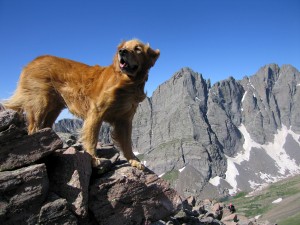
Rainier on Humboldt Peak’s west ridge in July 2009 with the Ellingwood Arete on Crestone Needle in profile in center of picture. Photo by Joel Gratz and was featured as the cover photo in the 2011 Vail Daily Pet Calender
Below is a rough outline of our route up Crestone Needle’s Ellingwood Arete with the “direct start” variation (from a picture I took in July 2009 from Humboldt Peak):
There is so much information to be found on this route, I really won’t get into the details of the climb, but just share our experience up this wonderful route. This was my 6th time up into the South Colony Lakes basin and 4th time up the Needle, but I have to say this is one of the most striking and fantastic 14ers in our state. I am always in awe of this peak that just seems to jut out of the earth like a knife blade.
J, Mikey, and I drove the 4+ hours from Vail down to the South Colony Lakes trailhead this past Saturday and picked up Steve hiking the lower portion of the South Colony Lakes Road since his 2WD car wouldn’t make it too far up. We packed the 3.5 miles or so into South Colony Lakes basin early that evening and found a nice campsite between Lower & Upper South Colony Lakes. There was a stiff breeze with the clouds and front moving out that evening, but we were still able to get a fire going despite the fact that I singed my hair doing so.
It was a great evening of Qdoba burritos, scotch, stories, and a pretty decent campfire despite the breeze. Steve slept in his bivy while J, Mikey, and I crashed in my 3-man tent. Up at 3:45am to coffee and oatmeal, we set off around 5am under some moonlight but mostly headlamp. We boogied up to Upper South Colony Lake, filled up our water bottles and bladders, and made our way east skirting the lake’s edge. After making our way up the lower steep scree field, we found ourselves at the base of the “direct start” to the route right at dawn. It was perfect timing to start the technical climbing as we could put away our headlamps and climb in the twilight before sunrise. We did two teams of two on two ropes with my full alpine rack and set of nuts: J and Mikey and then Steve and myself. The first team would leave in the gear for the second team’s leader to just clip during his lead. This method worked fairly well and we were able to be pretty efficient.
The 1st pitch’s traverse was pretty fun and likely goes at 5.6 leading into more of a 4th class/low 5th class dihedral to a decent belay ledge almost a full 60m rope length up. J led away up pitch 1 for the J/Mike team and I led this 1st pitch for the Steve/Brandon team.
The 2nd pitch proved to be more difficult than the mid-5th class rating we have seen. The issue with the 2nd pitch is that the crack in the center of the dihedral was fully wet with water running all down it. J led around this problem area to looker’s left just beautifully and then coordinated a delicate, exposed traverse back right into the dihedral above the wet rock. Steve did a solid lead for our team after Mike followed J up again to a great belay ledge with webbing almost a full 60m rope length up.
The sun had now risen and its warmth on the rock was rejuvenating. The 3rd pitch up the “direct start” was likely low 5th class and for some may not warrant a rope at all, but we were roped up nonetheless and climbed the final ledges up to much easier terrain. Now, a note on the “direct start”. While I always welcome the possibility of getting in more technical pitches, if I were to climb this route again, I may just consider climbing the class 3 “ledges” variation in lieu of the “direct start”. The rockfall is quite abundant in this several hundred foot dihedral with all of the small pebbles and rocks and it is almost impossible for the rope or one’s self not to knock down loose rocks. However, it was fun to get some more technical climbing with the “direct start”. Though, if I were behind a group already on the “direct start”, I would definitely wait until they finished climbing the lengthy dihedral to the ledges above.
Once on the grassy ledges above the “direct start”, we stowed the ropes, switched our rock shoes for trail runners, and made our way up the class 3/4 ledges bypassing a party of two to looker’s left who had ascended the “ledges” variation.
One of the highlights of this route for us was the absolutely amazing scrambling up these ledges. Even 4th class and low 5th class terrain could be found and we all had so much fun ascending this wonderful Crestone Conglomerate rock.
After some low 5th class scrambling up a mini-headwall, we reached the base of the 5.9 crack system. The 5.9 crack looked like so much fun and I was excited to lead this pitch. There is a mellower variation, which may be the more “standard” route, to looker’s right of the direct 5.9 crack. This arcing “standard” crack goes at about 5.6, I believe.
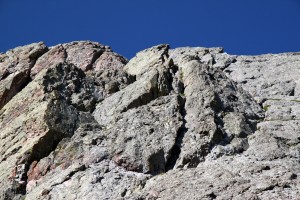
The 5.9 crack variation dead center of picture with the arcing standard 5.6 crack system to looker’s right
We donned our rock shoes once again, racked up, and Steve put me on belay. The climbing was absolutely awesome with great gear placements and really fun movements. I guess one piece of advice for this pitch is to bring plenty of slings. I had five slings on me and used them completely up. I could have used another few slings. Also, a #3 and #4 cam was helpful in the upper portion of the pitch.
It was a lengthy pitch as I only had about 5m left of my 60m rope when I topped out on the belay ledge. I knew the boys would have so much fun climbing this pitch. I would say the pitch is easy 5.9 (5.9-) at most, though at 14,000′ any technical climbing is not exactly “easy”. Steve had our pack and cruised the pitch as I belayed him up to me. J was right on Steve’s heels clipping my gear as he climbed and led the pitch beautifully.
J then belayed Mikey up the pitch who was hauling the backpack for J and Mikey.
The belay ledge was more than spacious and we climbed up another 10′ to the base of the final 5.7 pitch. The 5.7 pitch above looked amazing. Steve grabbed the rack, I put him on belay, and he was off on what we dubbed his “birthday pitch”.
It was a great lead for Steve and soon I was following the pitch with the always burdensome backpack on my back. I was able to snap some pics of J leading the final pitch as I climbed ahead of him.

J on the final 5.7 pitch with Mikey belaying him below. The other party of two can be seen below Mike belaying up the standard 5.6 arcing crack pitch
Another spacious belay ledge was at the top of the final 5.7 pitch and we all re-grouped there, stowed the ropes, and prepared for the final class 3 scramble to the Needle’s summit.
A few minutes later around 10:30am we were standing on the Needle’s summit enjoying the views and basking in the warmth of the sun. There was so little wind that the shirts came off to get a little sun on our pale torsos.
We met two fellows from Gunnison drinking beer on top who are trying to hike all of the 14ers in their Chaco sandals. Really funny guys and we enjoyed conversing with them. We then swapped out our rock shoes for trail runners, stowed our harnesses, rack, and ropes, and descended Crestone needle’s standard east gully. Ever since I first climbed Crestone Needle via its standard south face route, I have always ascended/descended the east gully all the way to the summit ridge. I have never done the crossover to the west gully for whatever reason. There is just too good of scrambling to be had in the east gully directly to the summit ridge. The down-scrambling ceased all too fast and we soon found ourselves back at the top of Broken Hand Pass around noon. I had been wanting to hike the 13er Broken Hand Peak (13,573′) and so J joined me for the 700′ from the pass up the mellow northwest slopes to its summit.
I really wanted to get a close-up view of the Needle and the Ellingwood Arete’s profile and the views sure didn’t disappoint.
We descended back to Broken Hand Pass, picked up our gear and rope, and headed on down to Lower South Colony Lake to find Steve fishing and Mikey napping. After a quick dunk in the lake, which always feels rejuvenating, we packed up camp and backpacked back to my truck. Arriving back in Westcliffe around 5pm, we had a long drive ahead of us. But, as always we stopped at my favorite dinner restaurant in Buena Vista, Casa del Sol, for awesome authentic Mexican cuisine. Yum. We arrived back home around 10pm, but great adventures in the mountains are always so worth it the late night arrival. Thanks to J, Steve, & Mikey for a very memorable day on a classic route.

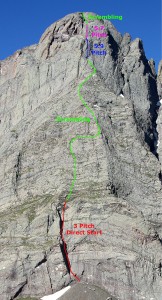
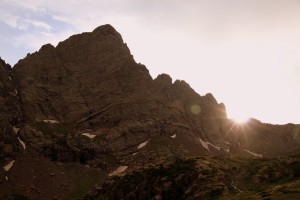


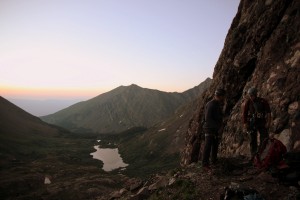
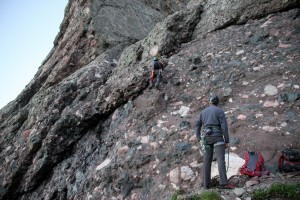

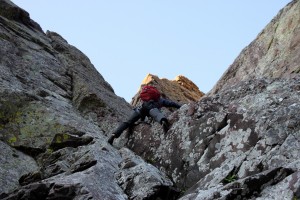
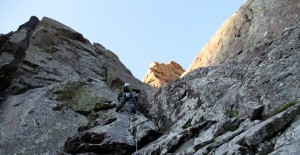
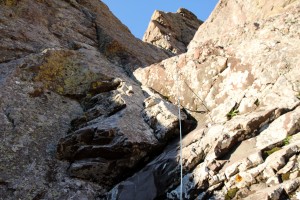
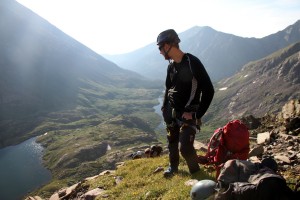
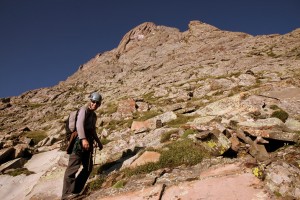
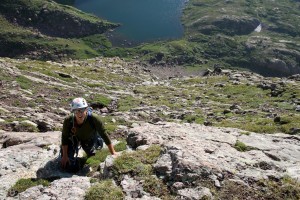
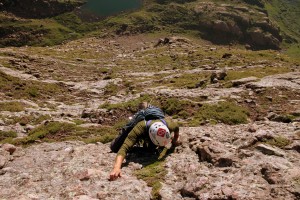

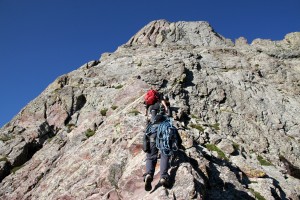
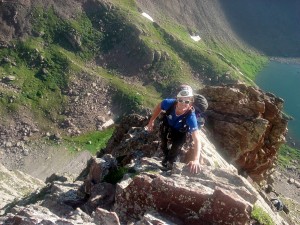

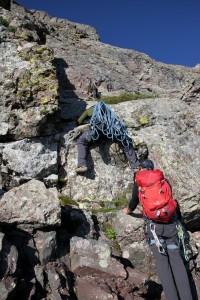


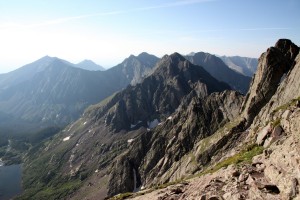
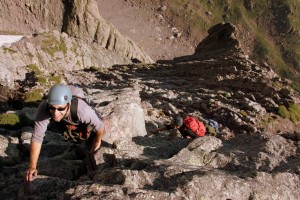

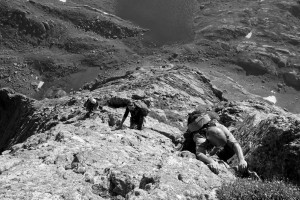
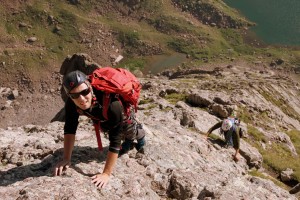



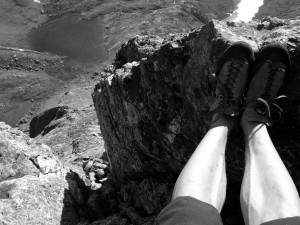
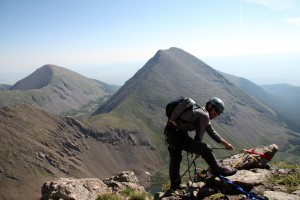




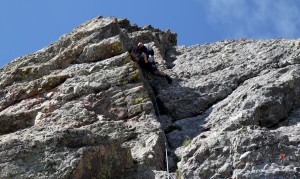
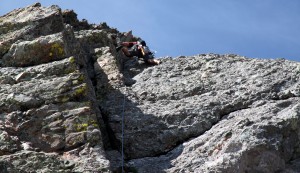
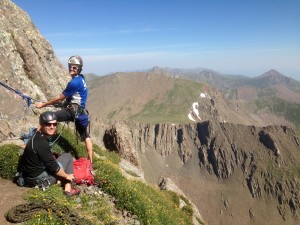
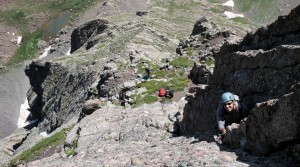

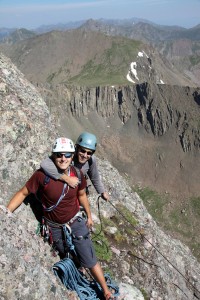
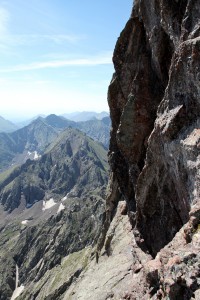
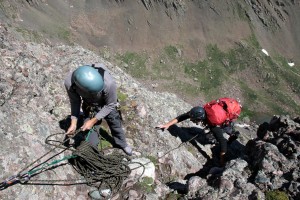
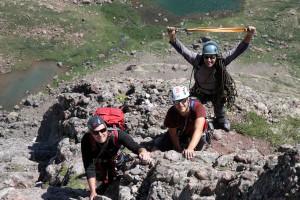
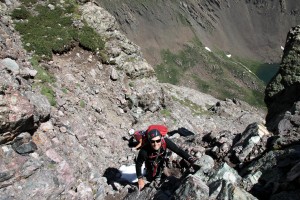
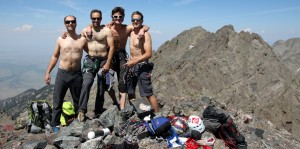
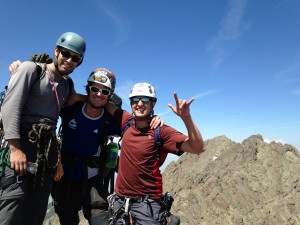

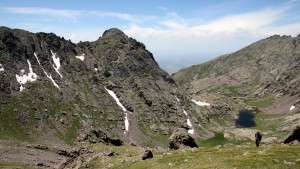
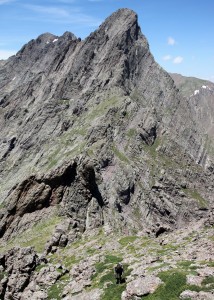
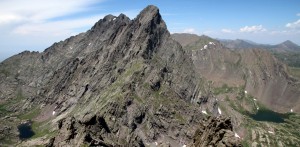
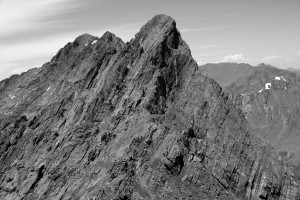

 Follow
Follow













Hey burnt pube head – At least you didn’t light your dog on fire. Ha! This really brings out the sweetness of the route. Sangres in the summer are awesome. I’ll have to give Casa Del Sol a shot. It’s always either Moonlight or Amica’s in Salida – which isn’t a bad thing, but I’m always open to new ideas. Good thing Kristine has a bun in the oven already – otherwise I don’t know if you could procreate again after that dip in the lake. Bubble’s temps a couple weeks ago reached the core of my soul, and balls. Hell of a day!
Miller – you are a funny man.Yes, no dogs on fire. I’m ok if its just me. Thanks for the comment, buddy. I hear ya on Amica’s in Salida – love it, but do give Casa del Sol a try. I just love it. Try to eat there every time I pass through BV around dinner time. I like that Kristine bun in the oven comment. Yes, a good thing, that is already taken care of. So lookin’ forward to our Gore shenanigans in a few weeks, man.
Brando! nice job! You’re killing it this summer man. I forgot to change my desktop background last week, but I’ll do that now, haha! If I don’t see your head before we ship off for Cali, I’m looking forward to Christine having her baby on Phoenix or Stewart in September. 🙂 Great report as always big guy!
Thanks for the comment, Mr Sarnelli! Been a good year, bud. Yes, change that desktop backgrund pic! ha. Sure hope to see ya before you ship off for Cali. I got a few Gore day trips in the works and will send ya those ideas/dates. Hopefully, we can get together. Yep, having Baby Chalk on top of a centennial sounds good to me! Maybe not so much to Kristine 🙂 Cheers, man.
Great work crew! That route is so unbelievably classic. Looks like you guys nailed it with the direct start and 5.9 direct pitch. I think we took the chicken 5.7 route around the climber’s right side, haha. Regardless, amazing route eh? I hope you guys are all doing well.
Thanks, Ben. Such a cool route. Hope to do it again with Kristine. Hope you are well too, bud! Will miss ya this weekend!